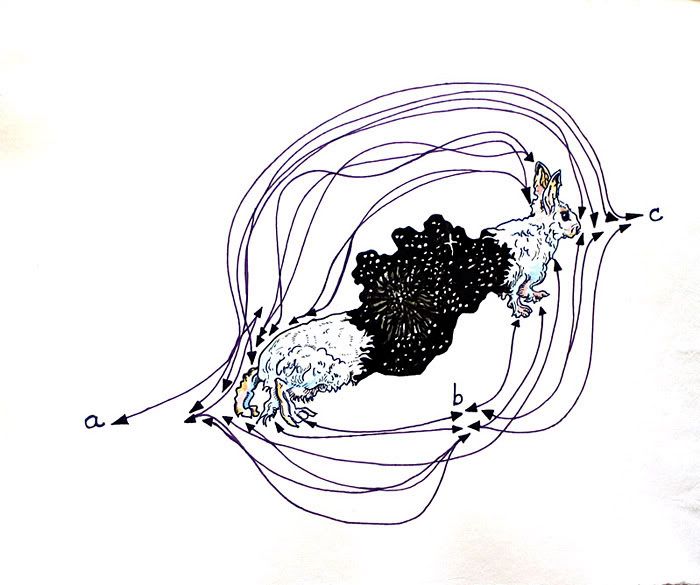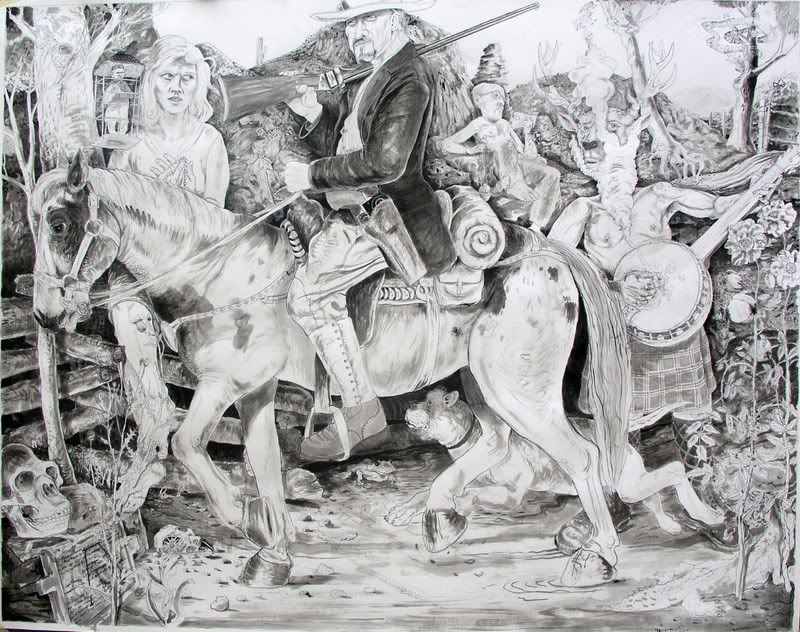I killed and ate one duck during my annual winter trip to the Eastern Shore. It's become a tradition...though "ritual" is perhaps a better word for it.
A vegetarian otherwise, my days of frequent hunting and fishing outings are gone, but the process of killing, preparing and consuming fish, fowl or flesh remains important to me. Once familiar to all, the steps involved are now considered foreign (even low) by the majority of contemporary meat eaters.
I have written on
this subject several times before; rather than reiterate
the same ideas, I thought I'd post some pictures of the process.
+++++
Lucy, a yellow
Labrador Retriever, carries the fallen duck back to the blind.
+++++
Dead hen
American black duck (
Anas rubripes), on the left, and a hen
mallard (
Anas platyrhynchos), shot by a hunting companion, laid on the dock before the cleaning begins.
(My father and I make every effort to avoid shooting black ducks. The species experienced a gradual population decline in recent decades. Fortunately they are now rebounding in the
Atlantic Flyway. Still, I would prefer to kill a mallard, but on this particular morning I failed to correctly identify the species as it winged past. It wasn't until Lucy retrieved the bird that I realized my mistake with a groan. Sadly, most duck hunters don't pick-and-choose species at all. Indeed, many hunters are no better at distinguishing species "on the wing" than your average urbanite.)
+++++
Ducks after plucking.
+++++
Ducks following gutting. The heads, wings and innards have been removed, and the heart of the black duck saved (on pan). The heart of the mallard had been mostly destroyed by the shot and could not be saved.
(When I was young, the duck liver could also be saved and eaten, but environmental pollutants have led biologists to discourage the consumption of internal organs.)
+++++
My hand following the gutting, a shockingly beautiful reminder of what meat consumption entails. I'm baffled by people who find such images disturbing yet continue to eat meat. They are the very definition of unreasonable and irresponsible.
(This isn't to suggest that I condemn contradiction. Indeed, I embrace it, but logic wins out in this case. If you find an act (any act) reprehensible or grotesque, how can you, with a clear conscience, ask it of someone else?)
+++++
Cleaned birds on pan, readied for rinsing and final preparations. Note how much more fat the mallard (bird on bottom) has than the black duck.
(
Anas rubripes is considered a "wilder" or "gamier" species and, in my estimation, the meat tastes better for it.)
+++++
Me, cleaning and picking off remaining pin feathers.
+++++
The two ducks are now ready to be cooked. I ate the black duck that same evening. It was delicious.
+++++My irreverent father sometimes says, half jokingly, "Make sure you finish everything on your plate. It died for your sins." In the days of environmental footprint quizzes, carbon trading programs, and hybrid automobiles, most western eating habits could fairly be deemed hedonistic. My annual kill, then, is sacramental. I "sin," if you will, so that I might reconfirm my decision, five years ago, to stop eating meat unless I am personally responsible for the killing involved in bringing meat to the table.
I'm not a true moralist, however. I realize that there is no universal code of ethics - only that which we, as individuals or societies, project onto others - but I do wish more people would consider their individual impact on the lives and environment of the animals we share this planet with, and depend upon for physical and emotional sustenance.
Photo credit: All images, Hungry Hyaena, 2007















